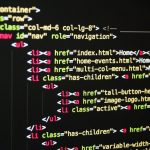You might be surprised by how AI can transform your productivity. By analyzing your habits and identifying when you work best, these tools can suggest ways to optimize your schedule. Imagine getting recommendations tailored just for you, minimizing distractions and maximizing focus. But how do these systems work, and what specific tools can you integrate into your daily routine? Let’s explore the potential impact of AI-driven productivity strategies.
Table of Contents
Key Takeaways
- AI analyzes user behavior patterns to provide tailored insights for enhancing productivity and workflow efficiency.
- Tools like Todoist and Trello utilize AI to recommend optimal task scheduling based on individual work habits.
- AI-driven data analysis identifies peak productivity hours, helping users effectively schedule their most important tasks.
- Integration of AI tools streamlines processes, reducing time spent on task management and improving overall productivity.
- Personalized recommendations empower users to focus on high-value activities, thereby maximizing their efficiency and output.
Understanding AI and Its Role in Productivity
As you explore the intersection of artificial intelligence and productivity, you’ll discover how AI can transform the way you work.
AI streamlines tasks, automates repetitive processes, and enhances decision-making. By leveraging machine learning algorithms, you can analyze patterns in your workflow, identifying bottlenecks and areas for improvement.
This technology adapts to your preferences, allowing for a more personalized work experience. Imagine having a virtual assistant that anticipates your needs, schedules meetings, or prioritizes tasks based on your habits.
With AI, you can focus on higher-value activities, boosting your overall efficiency. Embracing AI in your daily routine can lead to significant time savings, helping you achieve more with less effort while fostering a healthier work-life balance.
The Power of Data Analysis for Personalized Insights
When you analyze your user behavior patterns, you uncover valuable insights tailored just for you.
This data-driven approach allows algorithms to recommend tools and strategies that truly enhance your productivity.
Analyzing User Behavior Patterns
Understanding user behavior patterns is essential for harnessing the full potential of data analysis in enhancing productivity. By examining how you interact with tasks, tools, and time, you can uncover trends that inform better working habits.
For instance, tracking when you’re most focused can help identify your peak productivity hours. Analyzing your project completion rates reveals which types of tasks you excel at and which may need more attention. Additionally, recognizing distractions can guide you in creating an environment conducive to focus.
When you leverage this data, you’re not just reacting to your workflow; you’re actively shaping it. Ultimately, understanding your behavior patterns helps you make informed decisions, leading to more personalized and effective productivity strategies.
Tailoring Recommendations Algorithmically
By leveraging data analysis, you can create tailored recommendations that enhance your productivity in meaningful ways.
Analyzing your past behavior, preferences, and performance patterns allows you to identify what works best for you. Using algorithms, you can sift through vast amounts of data to uncover insights that highlight your strengths and weaknesses. This enables you to receive customized suggestions that align with your unique work style and goals.
For instance, if you consistently perform better in the mornings, an algorithm can recommend scheduling your most important tasks during that time.
Enhancing Productivity With Insights
Harnessing the power of data analysis can greatly enhance your productivity by providing personalized insights tailored to your work habits. By examining your past performance, you can identify patterns and trends that reveal your peak productivity times and common distractions.
These insights allow you to optimize your schedule, focusing on high-priority tasks when you’re most alert. Additionally, data analysis can help you pinpoint tools and techniques that work best for you, whether it’s time-blocking, the Pomodoro technique, or specific project management apps.
Armed with this knowledge, you’ll make informed decisions that align with your unique workflow. Ultimately, leveraging these insights can lead to increased efficiency, reduced stress, and a more satisfying work experience.
Tools That Leverage AI for Tailored Recommendations
As you navigate the ever-evolving landscape of productivity tools, you’ll find that AI-driven solutions can greatly enhance your efficiency through personalized recommendations.
Tools like Todoist and Trello harness AI to analyze your tasks and suggest ideal scheduling to keep you on track. Notion uses AI to customize templates based on your workflow, making organization seamless.
Additionally, apps like RescueTime provide insights into your habits, helping you identify distractions and focus better. By integrating these AI-powered tools, you can streamline your processes and adapt them to your unique needs.
Embracing these technologies not only saves time but also boosts your overall productivity, allowing you to work smarter, not harder.
Implementing AI-Driven Strategies in Your Workflow
To boost your productivity, you need to start implementing AI-driven strategies in your workflow.
By focusing on data-driven decision making, you can make smarter choices that enhance your efficiency.
Plus, automating repetitive tasks frees up your time for more important work, allowing you to focus on what truly matters.
Data-Driven Decision Making
While implementing AI-driven strategies in your workflow, you’ll discover that data-driven decision making can considerably enhance your productivity. By leveraging insights from data analytics, you can make informed choices that align with your goals. This approach helps you identify trends, optimize processes, and allocate resources effectively.
Here’s a simple table to help you visualize the impact of data-driven decision making:
| Aspect | Traditional Method | Data-Driven Method |
|---|---|---|
| Decision Basis | Gut Feeling | Analytics |
| Time Spent on Research | High | Low |
| Outcome Predictability | Uncertain | High |
| Adaptability | Slow | Fast |
Embracing data-driven decision making empowers you to refine your workflow, leading to improved efficiency and better results.
Automation of Repetitive Tasks
After harnessing data-driven decision making, the next step is automating repetitive tasks.
By implementing AI-driven strategies, you can streamline your workflow and focus on what truly matters.
Here are some tasks to evaluate automating:
- Email sorting: Use AI to categorize and prioritize your inbox.
- Scheduling: Let AI tools manage your calendar and set appointments.
- Data entry: Automate data collection and input to reduce errors and save time.
- Reporting: Use AI to generate reports, providing insights without manual effort.
- Customer support: Implement chatbots for instant responses, freeing you up for complex queries.
Embrace automation, and watch your productivity soar as you reclaim valuable time in your day!
Measuring the Impact of AI on Productivity
As organizations increasingly adopt AI tools, understanding how these technologies influence productivity becomes essential. You’ll want to track key performance indicators (KPIs) to measure AI’s impact effectively. Here’s a simple framework to visualize this:
| KPI | Impact Measurement |
|---|---|
| Task Completion Rates | Increase in efficiency |
| Employee Engagement | Improved satisfaction |
| Time Savings | Reduction in hours spent |
| Error Rates | Decrease in mistakes |
| Revenue Growth | Boost in profits |
Future Trends: AI Innovations in Personal Productivity
With advancements in AI technology accelerating, we’re on the brink of a new era in personal productivity.
You’ll soon experience tailored tools that adapt to your unique work style and preferences.
Imagine AI systems that can:
Envision AI tools that intuitively adapt to your workflow, optimizing your productivity like never before.
- Predict your peak productivity hours for ideal task scheduling.
- Suggest personalized breaks to enhance focus and creativity.
- Automate mundane tasks, freeing you up for strategic thinking.
- Analyze your work habits to provide actionable feedback.
- Integrate seamlessly with your favorite apps for a cohesive experience.
These innovations promise to transform how you approach your daily tasks, making you more efficient and effective.
Embracing these AI advancements will empower you to not just work harder, but smarter, ultimately enhancing your overall productivity journey.
Frequently Asked Questions
How Can I Start Using AI for Personal Productivity Today?
You can start using AI for personal productivity today by exploring apps designed to manage your tasks, prioritize your schedule, and automate routine actions. Test a few to see which fits your needs best.
Are There Any Privacy Concerns With AI Productivity Tools?
Yes, there are privacy concerns with AI productivity tools. They often collect and analyze your data, which can lead to unauthorized sharing. It’s essential to review privacy policies and adjust settings to protect your information.
What Types of Data Do AI Tools Typically Analyze?
AI tools typically analyze data like your usage patterns, task completion rates, time spent on activities, and calendar events. They gather insights to help you optimize your workflow and boost your productivity effectively.
Can AI Recommendations Be Customized for Different Industries?
Yes, AI recommendations can definitely be customized for different industries. By analyzing specific industry data and trends, you’ll receive tailored insights that cater to your unique operational needs, enhancing overall productivity and effectiveness.
Is AI Effective for Both Individual and Team Productivity?
Yes, AI’s effective for both individual and team productivity. It analyzes data, identifies patterns, and suggests tailored strategies, helping you and your team work smarter, streamline processes, and achieve goals more efficiently together.




